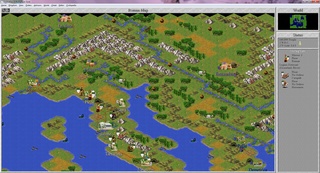Sid Meier’s Alien Crossfire, released in 1999 as an expansion to Alpha Centauri, is a turn-based strategy game developed by Firaxis Games. While it carries Sid Meier's name, the game was primarily designed by Brian Reynolds, also the lead designer of Sid Meier's Civilization II, and co-developed with a talented team of veterans, including Douglas Kaufman and Bing Gordon. Unlike the Civilization series, which was developed at MicroProse, Sid Meier's Alpha Centauri and its expansion marked a fresh start under Firaxis Games, a company Meier co-founded after leaving MicroProse in 1996.
The genesis of Sid Meier's Alpha Centauri lies in a simple question: what happens after the spaceship is launched at the end of a Civilization game? The Firaxis team set out to explore that question in a hard science fiction setting. Extensive research was done to create a plausible future history and rich world-building. The team consulted scientific literature, drew on classic sci-fi influences, and built an entirely new game engine. Each of the game’s factions was shaped by ideological extremes rather than nations, a break from traditional Civ gameplay, and each had unique units, philosophies, and technologies.
Gameplay in Alpha Centauri built upon the Civilization formula but pushed boundaries with new ideas. Players colonize an alien planet, building bases, exploring the landscape, and interacting with other factions. The tech tree was a sprawling, speculative vision of the future, featuring discoveries like Bio-Engineering, Social Psych, and Quantum Mechanics. Customizable units allowed players to combine chassis, weapons, and armor to suit their strategy. Social engineering replaced the traditional government systems, letting players fine-tune their society’s priorities. The Planet itself also played a major role in the game — it is alive, and the interaction with its ecology (and native lifeforms like mindworms) becomes crucial to survival.
Sid Meier’s Alien Crossfire added new depth to the experience. It introduced seven new factions, including the highly aggressive alien Progenitors — the Usurpers and the Caretakers — and five human splinter groups like the cybernetic Consciousness and the fundamentalist Cult of Planet. These factions brought new ideologies and unique gameplay strategies. Alien Crossfire also introduced new technologies, secret projects, base facilities, and units, further deepening the already rich strategy of the base game. The storyline expanded as well, with growing emphasis on the evolving intelligence of the planet and the alien presence that once called it home.
Critics and players alike praised Sid Meier's Alien Crossfire for its thought-provoking themes, mature writing, and complex mechanics. The game encouraged philosophical and ethical reflection alongside strategic mastery, a rarity in turn-based games of its time. It pushed the genre forward by integrating narrative with gameplay and by envisioning a future shaped by belief systems, science, and the unknowns of alien life.
Sid Meier’s Alien Crossfire remains a landmark in strategy gaming, not only as an excellent expansion but as a bold vision of science fiction in interactive form. It stands as one of Firaxis’s most ambitious and intellectually engaging titles, and a spiritual sequel to Sid Meier's Civilization that dared to imagine what came next.














